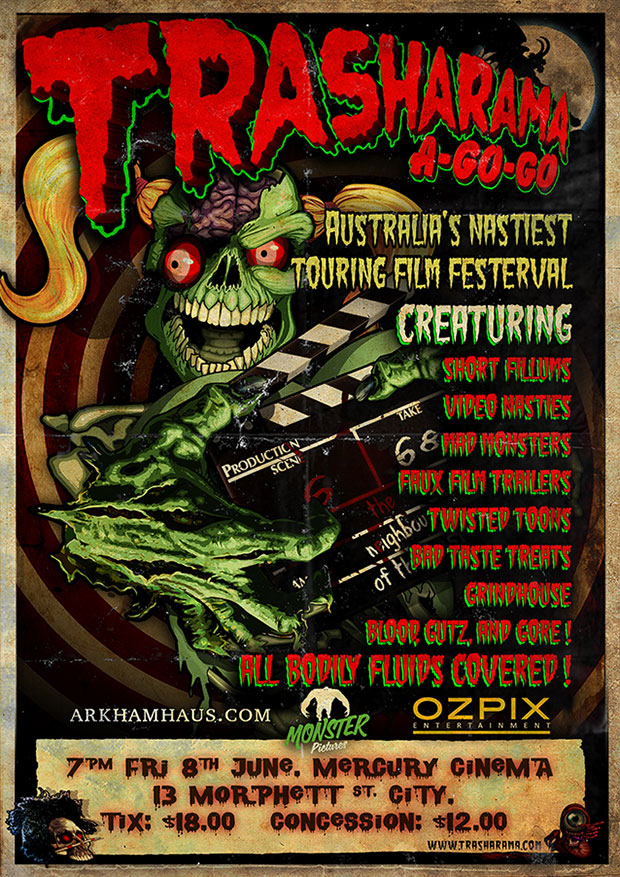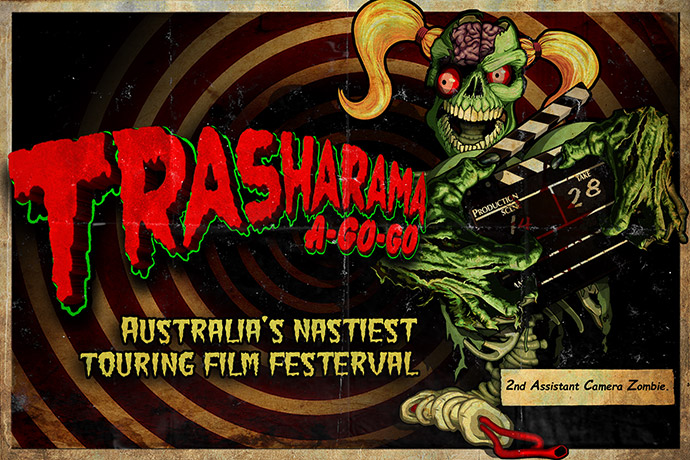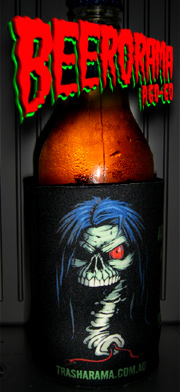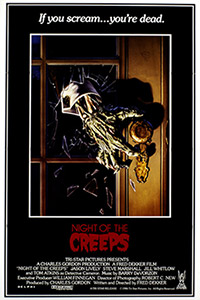Prologue :
| Many are the Darkling forgotten facets of world and boundless is our secret fascination with them ... | ||||
|
||||
2017 : Trasharama-Agogo Clapper-board Zombie Character Update
| Zombie-Town \ 2nd Assistant Camera | Open Brain injury | updated 15/07/18 | |||
Artwork Details :
| Artists Description and general comments. | ||||
© Anthony Marriott
|
All names, characters, images
and logos within the boundaries of this site are protected by copyright,
and other intellectual property laws. All rights in relation to
the products and creations identified within this website are owned
by Anthony Marriott (Arkhamhaus Images) or the party designated
as the owner of the rights. This site is © 1998-2016
Anthony Marriott. All Rights Reserved. There is no system of registration for copyright protection in Australia. Copyright protection does not depend upon publication, a copyright notice, or any other procedure. Copyright protection is free and automatic. While the copyright notice is not required for protection in Australia and in most other countries, it does notify people that the work is protected and identifies the person claiming the rights. In Australia, copyright law is contained in the Copyright Act 1968 (Cth) and decisions of courts.
As a result of international treaties such as the Berne Convention, most foreign copyright owners
are protected in Australia, and Australian copyright owners are protected in most other countries.
|












Client : Trasharama A-go-go's Annual short Horror Film Festival.
Brief :More Zombie Art Please.
Medium : Digital illustration : Created in Adobe Photoshop 2017 a.d.
Design notes : The decaying hands holding the clapper board and protecting zombie girl's modesty are a reference to Fred Dekker's Night of the Creeps (1986). As an 80s cult science fiction horror comedy the relevance was obvious. I used a rougher version of the NotC hand in a previous character design.
The clapper-board itself contains a reference to Wes Craven's creation Freddy Krueger: 1428 Elm Street is located in the north american town of Springwood in the A Nightmare on Elm Street series, it's the iconic former home of The Thompson Family and the Walsh family. Next on the list is Zombie girl's head wound: A fracture or penetrating wound of the skull associated with the rupturing or incision of the dura matter exposing the brain is termed an open craniocerebral injury. Open brain injuries can be caused by depressed fractures or by fractures piercing the dura matter, and in extreme cases by hammers, bottles, trephines, machetes, axes, shovels, chainsaws, firearms and helicopter blades.
Broadly speaking, the undead fall into two categories, slow zombies (think the original "Dawn of the Dead") or fast zombies (à la the film's 2004 remake). Slow zombies shuffle in an uncoordinated manner and can't open doors, suggesting a problem with the cerebellum, as observed by Neuroscientist Bradley Voytek, of the University of California. This region at the back of the head, known as the "little brain," plays an important role in coordinated movements. Tasks such as picking up a (coin) off the ground are actually really hard, Voytek said. "We still can't get robots to do this."
All zombies — fast ones included — seem to have poor memory and lack the ability to plan as a group.
"They don't really have any social skills," Voytek states.
They also lack cognitive control — there's no delaying the gratification of warm human flesh and fatty neuron packed tissue. These symptoms suggest their frontal lobes probably aren't functioning correctly, Voytek said. In animal studies, cutting connections to the frontal lobes causes lots of problems, he added.
Then there's the matter of zombie communication, or lack thereof. Voytek and Verstynen made a educational video in which they "diagnosed" zombies with a condition called Wernicke's aphasia, which results from damage to a bundle of connections between the brain's temporal and parietal lobes.
Zombies may have impaired brain function in many ways, but they do have a razor-sharp sense of smell — at least when it comes to sniffing out living human tissue. In a scene from the movie and comic book "Walking Dead," the protagonists smear themselves with the organs of dead zombies to prevent "live" zombies from smelling them.
By comparison, healthy humans are thought to have a poor sense of smell. But studies have shown that people can track scents really well if they focus on the task, Voytek said. In one study, blindfolded undergraduates at the University of California, Berkeley, were able to track a streak of chocolate in the grass by smell alone, and did it surprisingly well. So the zombie's ability to tell healthy bodies from decaying ones (i.e. other zombies) is "certainly plausible," Voytek said.
The U.S. military devised an elaborate plan should a zombie apocalypse befall it's country, according to a Defense Department document obtained by CNN. In an unclassified document titled "CONOP 8888," officials from U.S. Strategic Command used the specter of a planet-wide attack by the walking dead as a training template for how to plan for real-life, large-scale operations, emergencies and catastrophes. Zombie life forms "created via some form of occult experimentation in what might otherwise be referred to as 'evil magic,' to vegetarian zombies that pose no threat to humans due to their exclusive consumption of vegetation, to zombie life forms created after an organism is infected with a high dose of radiation are among the invaders the document outlines." "The only assumed way to effectively cause causalities to the zombie ranks by tactical force is the concentration of all firepower to the head, specifically the brain," the plan reads. "The only way to ensure a zombie is 'dead' is to burn the zombie corpse."
Soundtrack (music to draw to) :